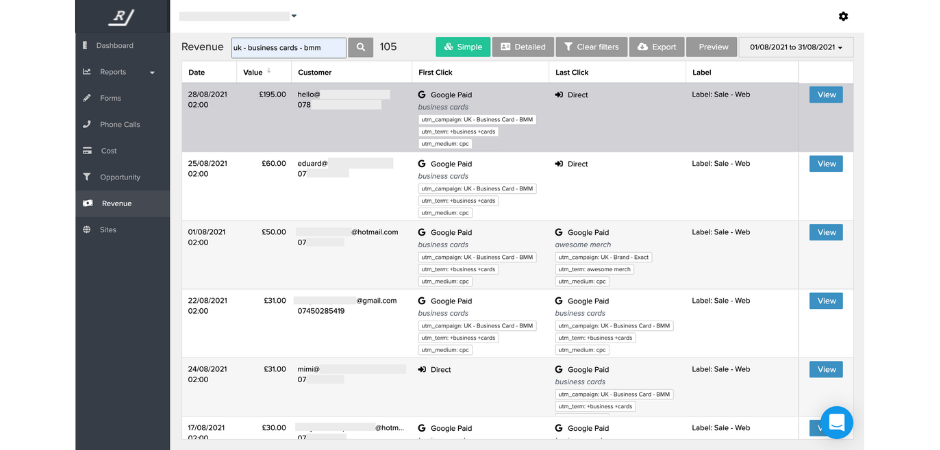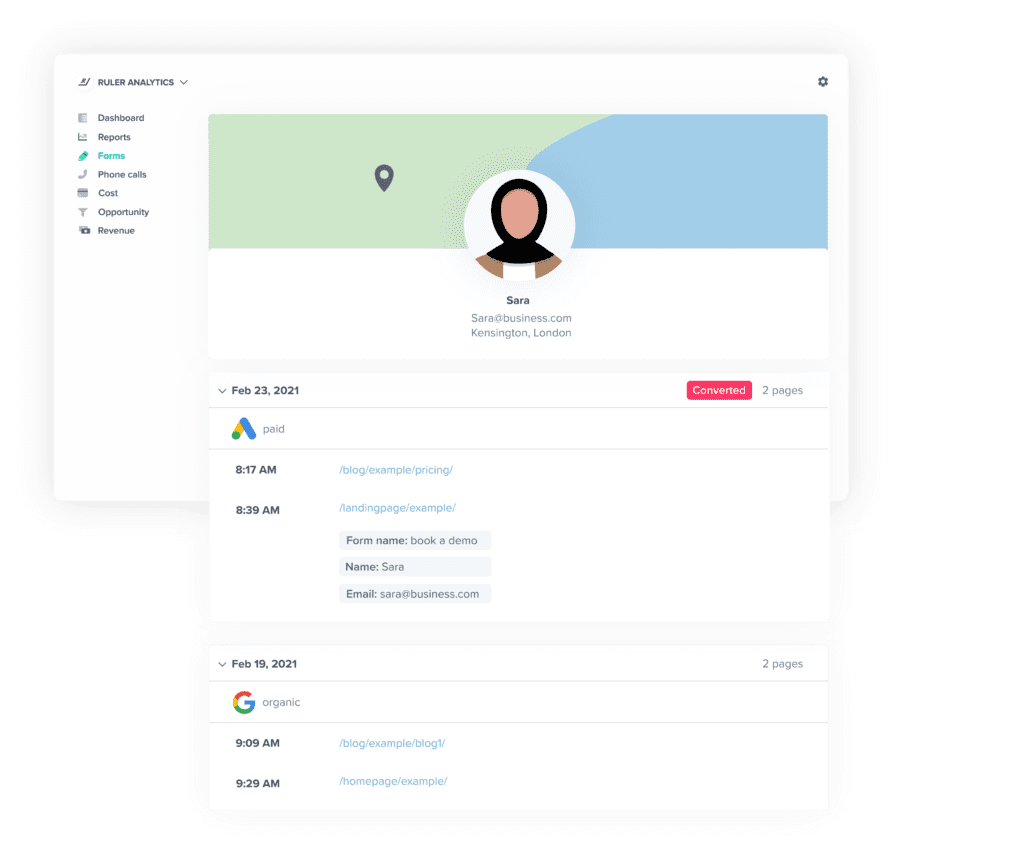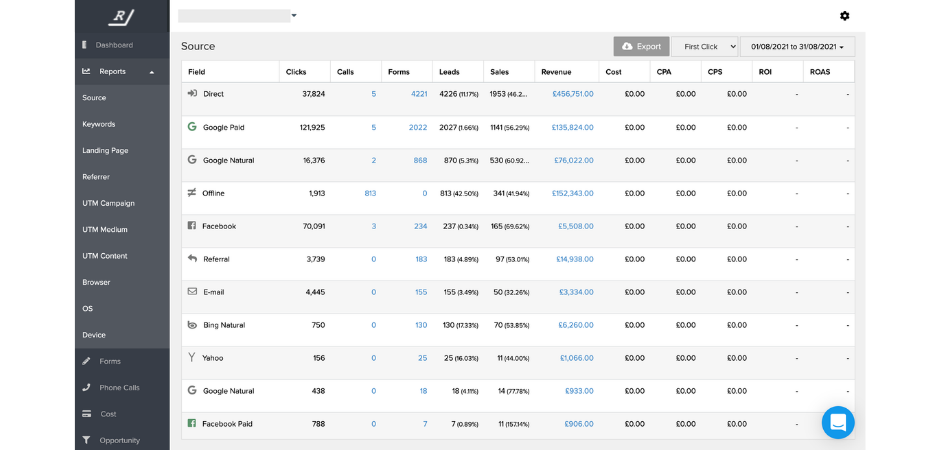Marketing attribution reports are a valuable asset to any marketing team. Without attribution as part of your regular reporting process, you’re likely not optimising your marketing efforts to increase revenue and scale your business.
We share exactly what you can learn from marketing attribution reports.
Marketing attribution isn’t a new concept. But how it supports marketers, and how it impacts businesses is always changing.
With it, you can track your touchpoints, evidence your impact and optimise your outputs.
Marketing attribution reports can help you understand the true impact of your paid advertising, link your offline sales to online searches and understand your customer journey. The list goes on, but the bottom line is, without attribution reports, you’re marketing blind.
🎓 Pro Tip
Want to learn more about attribution? Well, we’re the experts so we put all our knowledge into one free e-learning platform.
Enrol in Attribution Academy today
Keep reading to learn:
Let’s get stuck in!
Marketing attribution is how marketers assess how marketing touchpoints influence a user to convert into a sale. Attribution can help you to understand how much impact channels, campaigns, ads and even keywords have when it comes to driving revenue.
The aim of attribution is to prove the impact marketing has on sales, and use that data to drive more conversions and more revenue. Since marketers often struggle to calculate their return on investment due to disconnected data, attribution allows marketers to close that gap.
Related: Top marketing attribution software you need to try
Marketing attribution allows you to upgrade your marketing and optimise based on impact.
Attribution reports will unlock data to help you:
Marketing attribution is important because it helps marketers who:
If you rely on leads calling your business, then you likely struggle to track them. While you might be able to get a hold of how many calls you’re generating, you probably won’t be able to link that call to an anonymous website session.
Marketing attribution tracks every website visitor and links their sessions to their lead, and then revenue, data.
Related: Here’s how you can track your offline conversions
If you’re in B2B or sell high-value products, then it’s likely you have a long sales cycle.
Long sales cycles can be difficult to track in traditional analytics tools like Google Analytics and Google Ads due to their limited attribution windows.
If sales don’t occur within that window, then they cannot be tracked in said solutions. Why does this matter?
Well, even if you sell products completely online, once that window ends, any sales your paid campaigns brought in won’t get their due credit!
And that means a lower return on ad spend for you, which could result in less budget being allocated towards paid in the future.
Marketing attribution tools like Ruler Analytics will manage your lead and conversion data endlessly, meaning you can still track performance whether they convert in two months or two years.
Related: Experts weigh in on how to speed up long sales cycles
Users don’t click on your site and convert right away. Imagine if they did!
In reality, users can take tens or hundreds of touchpoints from start to end. For marketers, this becomes a data minefield. How do you track every single touchpoint a user has with your business and collate it to understand how different channels and campaigns influence your leads?
Well, attribution solves that too. Attribution tools like ours will track full customer journeys so you can see exactly which touchpoints leads and customers have with your business.
Related: View your full customer journey with Ruler Analytics
An attribution report is compiled data that shows how users go from visiting your website for the first time, to buying your product or service. So basically, you’re looking at an end-to-end marketing view of how users convert and what exactly caused them to convert.
If you want to be successful, then you need to know which channels, campaigns, ads and keywords are driving your website visitors. But also, which are driving new leads and new sales – and most importantly which drive the most revenue.
With attribution reporting in place, marketers can pinpoint exactly what is leading to the most revenue for their business. With it, you can make data-driven decisions and scale your business.
Those of you who are already familiar with marketing attribution are probably thinking, “well wait, aren’t there multiple types of attribution reports?”
And the answer is, yes! Depending on the type of attribution report you choose to run, you’re going to see different amounts of credit attributed to channels. That’s where the magic happens!
💡 Pro Tip
Ruler offers a whole range of attribution reports. From marketing source, keyword, landing page and even UTM reports, you can see exactly what is driving your leads and revenue. Book a demo to see it in action.
Marketers have plenty to gain by using an attribution report. How many times have you been asked exactly what return on investment you’re driving through marketing?
The truth is, it can sometimes be hard to pinpoint your impact. You’re battling disconnected data, long sales cycles and complicated customer journeys with hundreds of touchpoints.
But, with attribution reporting, you can cut through the noise to learn what’s driving revenue and what’s wasting resources.
With attribution reports, you can see how your campaigns are performing in terms of solid metrics like revenue.
Instead of judging a paid campaign on how many clicks or leads you’re creating, you can instead get deep in detail on which keywords are wasting budget and which are resulting in the most return on investment.
Realistically, as a marketer, any time you’re looking to prove your ROI, you should be using an attribution report.
But there are a few main times marketers rely on marketing attribution reporting.
You’ll want to be able to prove the impact of your marketing.
There’s no point relying on your gut.
Prove your worth with tangible data on how marketing influences sales.
⚡️ Pro Tip
Here’s exactly how Ruler attributes revenue back to your marketing so you can prove your worth to senior leaders and stakeholders.
Some content is created to drive traffic. Other pieces of content is created to convert that traffic. But how can you know each are doing their job?
With marketing attribution in place, you can view how marketing drives clicks, leads, sales and revenue.
It gives you a clear indication of what works for what part of the funnel.
There’s conversion tracking available within your paid tools. But they’re biased.
They can’t track long customer journeys, so you could be missing key data to prove your ROAS.
With attribution reporting, you can see how campaigns, ads and even keywords drove clicks, leads and sales.
Content attribution is a growing area in the marketing world. With more content being published, it’s getting harder to piece each consumption of content to understand the journey users go on.
Attribution reporting can apply a variety of model types to your data so you can see exactly how your content affects different stages of the journey.
With a marketing attribution tool in place, you’ll have access to a whole host of marketing attribution reports. With these, you can learn:
Let’s look at each in more detail.
How many times have you been asked for concrete evidence that marketing is impacting sales? Probably more times than you can count.
And when you’re generating leads, rely on offline conversions or see long sales cycles, then proving your ROI is particularly tricky.
In all of our reports, you can clearly see how much revenue you’re generating. Whether you’re in the marketing channel, landing page or keyword report, you’ll see an accurate value for closed revenue attributed to the influencing factor.

Related: See exactly how Ruler can attribute your revenue to your marketing
Even if you are able to see which channel drove a new lead via a call or form submission, chances are you can’t link that lead to their previous marketing touchpoints.
With marketing attribution, there’s an attribution report for just that.
🚀 Pro Tip
Here’s exactly how to track every touchpoint for every single lead. Having this full customer journey view on a visitor-level will give you the insight you need to optimise your marketing across channel, content and budget.
Where your leads come in, you can click on individual entries and see their full customer journey. That includes the first source that led to a session, which pages they’ve engaged with and when plus how they converted into a lead.
If you’re generating small numbers of leads each month, this report is a great way to understand how high-value customers found and engaged with your business.

Now you know your marketing ROI, chances are you’ll want to improve it. Marketing attribution tools will highlight which channels are performing best. And that’s not just from a first or last-click basis.
Depending on your attribution report, you can see how all of your content is working in conjunction with each other.
Once you can see what channels are working, you can realign your strategy to focus your time and budget on what works. You’ll also see what’s not working so well. You can look into why it isn’t working.
Perhaps on a first-click basis, your paid advertising looks like it’s not delivering much in the way of sales. However, by using a multi-attribution report, you’ll be able to see the real role (and therefore real ROAS) of your paid advertising.
Related: How to improve your ROAS using Ruler Analytics
Using marketing attribution reports, you can make more informed decisions based on revenue, not clicks or impressions.

👉 Book a demo now to see the data in action
Being able to see the customer journey of your users is helpful for a multitude of reasons. One great use of this data is to analyse journeys for any micro-conversions. That is, perhaps one channel, in particular, is working particularly well to drive leads that go on to become customers.
Looking at your content, and your campaigns, holistically means that you can see all of your work in connection with one another.
By identifying small series of touchpoints that work well to convert your users, within larger customer journeys, you can maximise promoting those micro-conversions. This will eventually mean shorter sales cycles as you start to identify the best triggers for moving users through the funnel.
As you can see, there are a whole host of marketing attribution reports available for you to get stuck into. And don’t forget, Ruler doesn’t just hold all of this data in its own dashboard.
The great thing about Ruler is that it’ll fire all of your revenue and lead data to the apps you need it most.
You’ll be able to see all of your lead data in your CRM. And, you’ll be able to see and attribute closed revenue data from your CRM in marketing tools like Google Analytics and Facebook Ads Manager.
Sound good? If you want to learn more about how it all works, you can book a demo with our team. Or, you can check out this blog on how Ruler attributes revenue back to your marketing.
You’ll learn exactly what you stand to gain by integrating your CRM and analytics apps (and more!) with Ruler, plus how easy it is to get started!